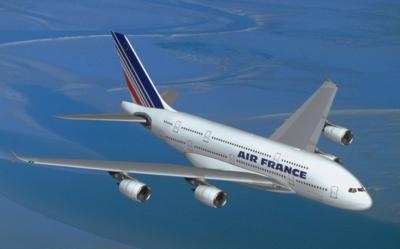Future Travel Will Increasingly Rely On Aviation
As aviation becomes increasingly accessible in all parts of the world, future travel will increasingly be made by air particularly to and from emerging markets. According to Airbus’ latest Global Market Forecast (GMF) in the next 20 years (2013-2032), air traffic will grow at 4.7 per cent annually requiring over 29,220 new passenger and freighter aircraft valued at nearly $4.4 trillion. Some 28,350 of these are passenger aircraft valued at $4.1 trillion. Of these, some 10,400 will replace existing aircraft with more efficient ones. With today’s fleet of 17,740 aircraft, it means that by 2032, the worldwide fleet will double to nearly 36,560 aircraft.

Economic growth, growing middle classes, affordability, ease of travel, urbanization, tourism, and migration are some factors increasing connectivity between people and regions and how often they travel. Increasing urbanization will lead to a doubling of mega cities from 42 today to 89 by 2032, and 99 per cent of the world’s long-haul traffic will be between or through these.
Traffic growth has led to average aircraft size ‘growing’ by 25 per cent with airlines selecting larger aircraft or up-sizing existing backlogs. Larger aircraft combined with higher load factors make the most efficient use of limited slots and contribute to rising passenger numbers without additional flights as announced by London’s Heathrow Airport. A focus on sustainable growth enabled fuel burn and noise reductions of at least 70 per cent in the last 40 years and this trend continues. “By 2032, Asia-Pacific will lead the world in traffic overtaking Europe and North America. Today on average, a fifth of the population of the emerging markets take a flight annually and by 2032, this will swell to two thirds. The attraction of air travel means that passenger numbers will more than double from today’s 2.9 billion, to 6.7 billion by 2032, clearly demonstrating aviation’s essential role in economic growth,” said John Leahy, Chief Operating Officer –
Customers.
Domestic flows are also set to rise strongly with domestic India growing at the fastest rate (nearly 10 per cent), followed by China and Brazil (seven per cent). Overall, with an above world average traffic growth rate of 5.5 per cent, Asia-Pacific will account for 36 per cent of all new passenger aircraft demand, followed by Europe (20 per cent) and North America (19 per cent).

In the Very Large aircraft market, Airbus predicts demand for 1,334 passenger aircraft valued at $519 billion. Of these, 47 per cent will be needed in the Asia-Pacific region, followed by the Middle East (26 per cent) and then Europe (16 per cent). In the Twin Aisle market the demand is forecast to be 6,779 aircraft valued at $1.82 trillion. Of these, 48 per cent of deliveries will be in Asia Pacific, followed by Europe (15 per cent) and the Middle East (13 per cent).
The Single Aisle market represents 71 per cent of deliveries by unit numbers with a requirement for 20,242 aircraft valued at $1.80 trillion. Asia-Pacific will require 34 per cent of deliveries followed by North America and Europe requiring 23 per cent each. The global success of low cost carriers (LCC) especially in Europe, and increasingly in Asia, the Middle East and Africa is helping to open new markets and give access to the benefits of flight to first time flyers from these regions. By 2032, LCCs will have increased their traffic market share from today’s 17 per cent to 21 per cent.
 ANN's Daily Aero-Term (04.28.24): Airport Marking Aids
ANN's Daily Aero-Term (04.28.24): Airport Marking Aids Aero-News: Quote of the Day (04.28.24)
Aero-News: Quote of the Day (04.28.24) ANN's Daily Aero-Linx (04.28.24)
ANN's Daily Aero-Linx (04.28.24) Aero-News: Quote of the Day (04.29.24)
Aero-News: Quote of the Day (04.29.24) ANN's Daily Aero-Linx (04.29.24)
ANN's Daily Aero-Linx (04.29.24)




